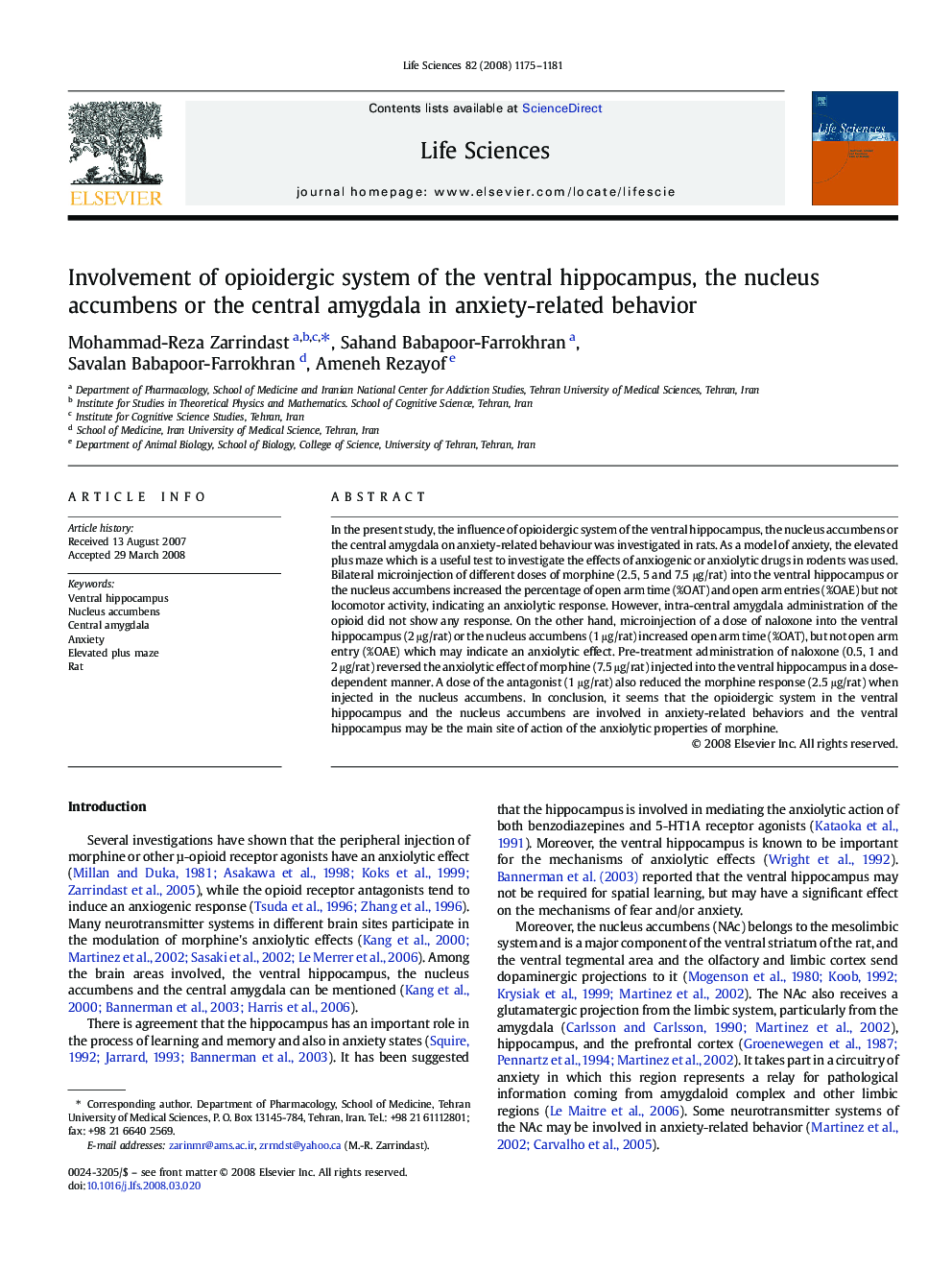| کد مقاله | کد نشریه | سال انتشار | مقاله انگلیسی | نسخه تمام متن |
|---|---|---|---|---|
| 2553675 | 1560751 | 2008 | 7 صفحه PDF | دانلود رایگان |

In the present study, the influence of opioidergic system of the ventral hippocampus, the nucleus accumbens or the central amygdala on anxiety-related behaviour was investigated in rats. As a model of anxiety, the elevated plus maze which is a useful test to investigate the effects of anxiogenic or anxiolytic drugs in rodents was used. Bilateral microinjection of different doses of morphine (2.5, 5 and 7.5 μg/rat) into the ventral hippocampus or the nucleus accumbens increased the percentage of open arm time (%OAT) and open arm entries (%OAE) but not locomotor activity, indicating an anxiolytic response. However, intra-central amygdala administration of the opioid did not show any response. On the other hand, microinjection of a dose of naloxone into the ventral hippocampus (2 μg/rat) or the nucleus accumbens (1 μg/rat) increased open arm time (%OAT), but not open arm entry (%OAE) which may indicate an anxiolytic effect. Pre-treatment administration of naloxone (0.5, 1 and 2 μg/rat) reversed the anxiolytic effect of morphine (7.5 μg/rat) injected into the ventral hippocampus in a dose-dependent manner. A dose of the antagonist (1 μg/rat) also reduced the morphine response (2.5 μg/rat) when injected in the nucleus accumbens. In conclusion, it seems that the opioidergic system in the ventral hippocampus and the nucleus accumbens are involved in anxiety-related behaviors and the ventral hippocampus may be the main site of action of the anxiolytic properties of morphine.
Journal: Life Sciences - Volume 82, Issues 23–24, 6 June 2008, Pages 1175–1181